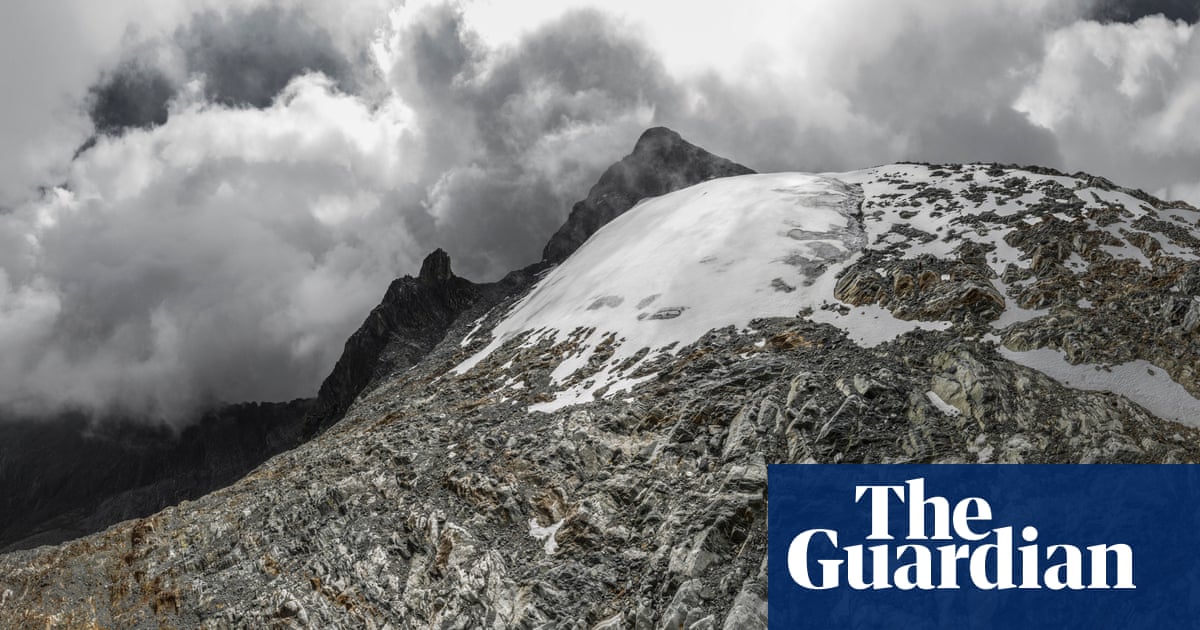Venezuela has lost its last remaining glacier after it shrunk so much that scientists reclassified it as an ice field.
It is thought Venezuela is the first country to have lost all its glaciers in modern times.
The country had been home to six glaciers in the Sierra Nevada de Mérida mountain range, which lies at about 5,000m above sea level. Five of the glaciers had disappeared by 2011, leaving just the Humboldt glacier, also known as La Corona, close to the country’s second highest mountain, Pico Humboldt.
The Humboldt glacier was projected to last at least another decade, but scientists had been unable to monitor the site for a few years due to political turmoil in the country.
Now assessments have found the glacier melted much faster than expected, and had shrunk to an area of less than 2 hectares. As a result, its classification was downgraded from glacier to ice field.
“Other countries lost their glaciers several decades ago after the end of the little ice age but Venezuela is arguably the first one to lose them in modern times,” said Maximiliano Herrera, a climatologist and weather historian who maintains a chronicle of extreme temperature records online.
According to Herrera, Indonesia, Mexico and Slovenia are next in line to become glacier-free, with Indonesia’s Papua island and Mexico having experienced record-high warmth in recent months, which is expected to accelerate the glaciers’ retreat.
“The glacier at Humboldt does not have an accumulation zone and is currently only losing surface, with no dynamic of accumulation or expansion,” said Luis Daniel Llambi, an ecologist at Adaptation at Altitude, a programme for climate change adaptation in the Andes.
“Our last expedition to the area was in December 2023 and we did observe that the glacier had lost some 2 hectares from the previous visit in 2019, [down from 4 hectares] to less than 2 hectares now.”
The world has recently been experiencing the El Niño climate phenomenon, which leads to hotter temperatures and which experts say can accelerate the demise of tropical glaciers.
“In the Andean area of Venezuela, there have been some months with monthly anomalies of +3C/+4C above the 1991-2020 average, which is exceptional at those tropical latitudes,” said Herrera.
Llambi said Venezuela is a mirror of what will continue to happen from north to south, first in Colombia and Ecuador, then in Peru and Bolivia, as glaciers continue to retreat from the Andes.
“This is an extremely sad record for our country, but also a unique moment in our history, providing an opportunity to [not only] communicate the reality and immediacy of climate change impacts, but also to study the colonisation of life under extreme conditions and the changes that climate change brings to high mountain ecosystems.”
In a last-ditch attempt to save the glacier, the Venezuelan government has installed a thermal blanket to prevent further melting, but experts say it is an exercise in futility.
“The loss of La Corona marks the loss of much more than the ice itself, it also marks the loss of the many ecosystem services that glaciers provide, from unique microbial habitats to environments of significant cultural value,” said Caroline Clason, a glaciologist and assistant professor at Durham University.
Venezuelan glaciers had a limited role in water provision for the region, in contrast with countries such as Peru, where tropical glaciers are much more extensive.
“The biggest impact for me of the disappearance of glaciers is cultural,” said Llambi. “Glaciers were a part of the region’s cultural identity, and for the mountaineering and touristic activities.”
Clason said: “That Venezuela has now lost all its glaciers really symbolises the changes we can expect to see across our global cryosphere under continued climate change. As a glaciologist, this is a poignant reminder of why we do the job and what is at stake for these environments and for society.”



